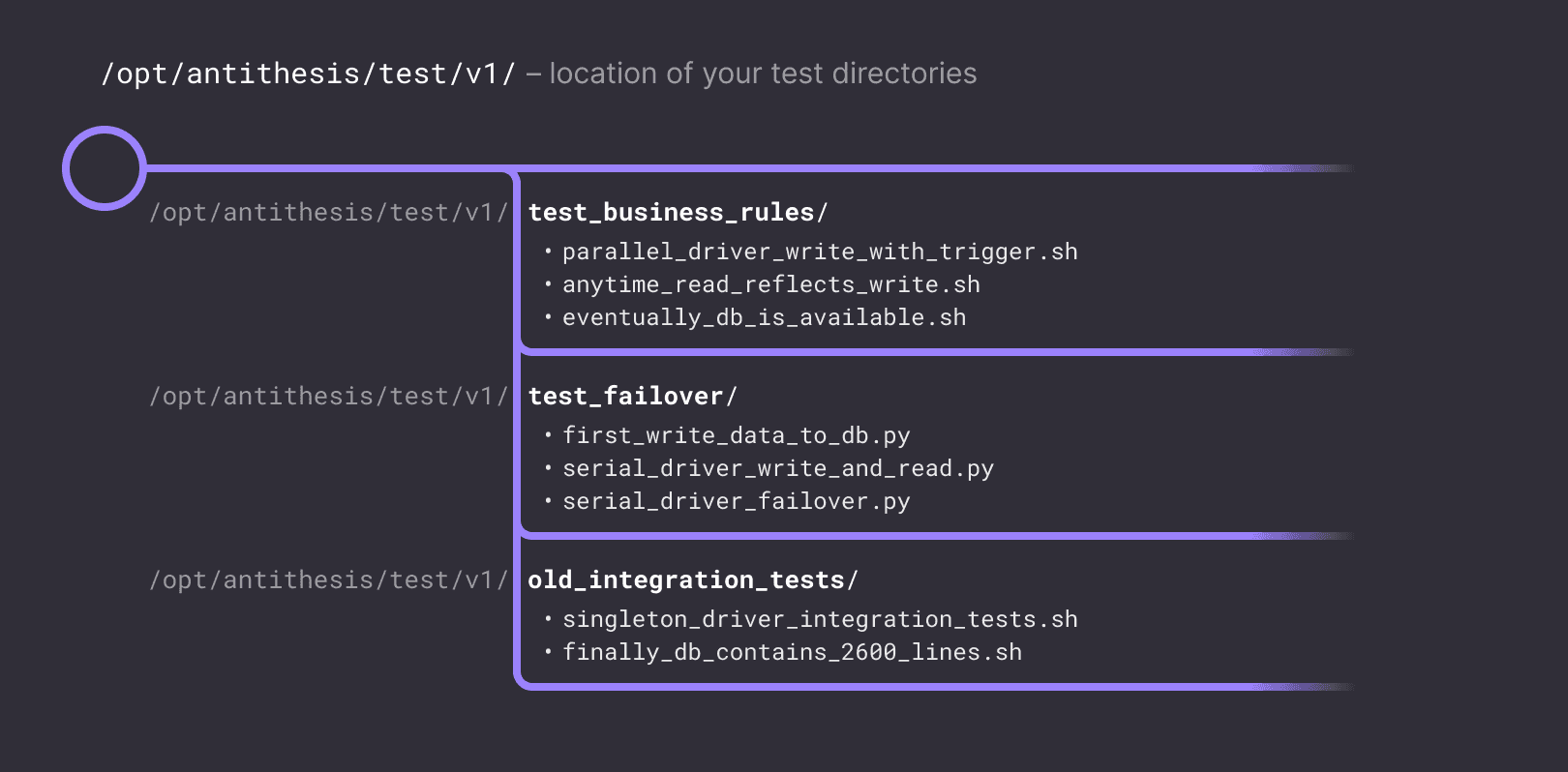Test Composer basics
This page explains how to create test templates for Antithesis, and how Antithesis recognizes and runs them.
The quickest way to write your first test template is described in this tutorial. See Test Composer commands for details of available test commands.
Test templates
A test template is the entire collection of tests written for the Test Composer in a given environment. When you kick off a test, that test will run a single test template.
Antithesis uses an opinionated framework for creating test templates, in the form of a set of naming conventions that enable Antithesis to detect and run your tests.
A test template consists of one or more test directories, each containing one or more test commands.

Test directories
/opt/antithesis/test/v1/<test_dir>A test directory is a subdirectory of /opt/antithesis/test/v1 in any of your containers, containing one or more test commands that are compatible with one another.
Each execution history in Antithesis uses test commands from one, and only one, test directory.
If test directories with the same name appear in multiple containers, they will be treated as belonging to the same test, even if they define different test commands.
Directories and files with a helper_ prefix in their name will be ignored by the Test Composer. Use this prefix to include helper scripts for your test commands.
We strongly suggest putting test directories in a standalone container, to simulate a client – your “client container”. If you do this, the client container must be kept running, for instance by using sleep infinity. Do not use a test command as the entry point for the client container.
Test commands will run inside the container where they’re defined.
Test commands
/opt/antithesis/test/v1/<test_dir>/<prefix>_<command>A test command is an executable for the Test Composer to run, and must be nested directly under a test directory. If you’re using an existing script, you can simply put a symlink in the test directory. ln /path/to/existingscript /opt/antithesis/test/v1/<test_name>/<prefix>_<command>
Test commands can be binaries or scripts and must have an appropriate shebang in the first line, e.g. #!/usr/bin/env bash
It may have any or no extension, but must be marked executable by the container’s default user. It will typically call the APIs of the software under test in order to change the state of the system, check properties, or both.
<prefix> specifies the type of test command. See Test Composer commands for the full list of options.
<command> can be any valid unix filename.
Starting your tests
Before running any tests, Antithesis initializes your software and its dependencies. Getting started describes this process in detail.
Once your system is up and running, it should emit a SetupComplete message using our SDKs. This message tells Antithesis to start the Test Composer and begin injecting faults.
The SetupComplete message should therefore not be part of a test command, though it’s fine for it to exist in the same container, for example, as part of the container’s entry point.
Adapting existing tests
If you want to use an existing test or workload in Antithesis, whether it’s an existing integration test or an advanced, well-developed distributed systems workload, you can run it in the Test Composer simply by making it a singleton_driver test command in a test directory as described above. If you run into any problems with this approach, please get in touch on Discord.
Checking your setup locally
Because the Test Composer expects to run inside Antithesis’ deterministic testing environment, it depends on assumptions about the multiverse and container orchestration that only hold in Antithesis.
If you’d like to check your setup locally to ensure that your test templates will work before deploying them to Antithesis, please read our guide to local development.